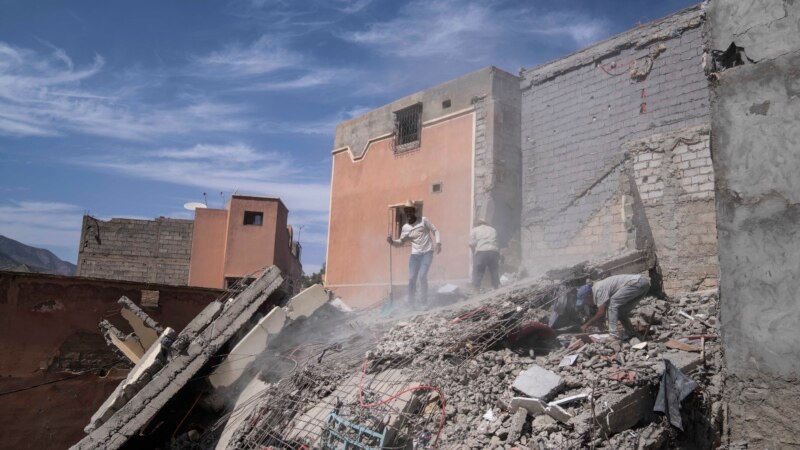This website uses cookies so that we can provide you with the best user experience possible. Cookie information is stored in your browser and performs functions such as recognising you when you return to our website and helping our team to understand which sections of the website you find most interesting and useful.
 MOULAY BRAHIM, MOROCCO —
MOULAY BRAHIM, MOROCCO —
When a historic earthquake struck Morocco in September, Ahmed Aazab tightly hugged his wife and four children as their home’s brick walls tumbled around them.
The roof collapsed, shattering clay pots in the kitchen and trapping picture frames and homework assignments beneath rubble. When the ground finally stopped shaking, the construction worker shepherded his five loved ones to a park. Then he rescued his father, mother and aunt, who were trapped in his childhood home nearby.
For centuries, families in towns like Moulay Brahim in Morocco’s High Atlas Mountains constructed their homes of stone and bricks, which they made by tightly ramming handfuls of muddy earth into molds.
Now they face the daunting task of rebuilding from the quake, and villagers and architects are debating just how.
From Mexico to Hawaii, the question of rebuilding communities without changing them for the worse arises in the aftermath of virtually all natural disasters. In Morocco, King Mohammed VI’s cabinet pledged in a statement the week after the quake to rebuild “in harmony with heritage and architectural features.”
More than 3,000 people died in September's earthquake in Morocco, and some 1,000 villages were damaged. The country plans to spend $11.7 billion on post-earthquake reconstruction over the next five years — equivalent to roughly 8.5% of its annual GDP. Morocco plans to allocate residents cash relief for necessities, with an additional $13,600 to rebuild households that were destroyed and $7,800 for those that were partially destroyed.
Because of the number of earthquakes in Morocco, there’s widespread agreement among villagers and architects that safety should be a top priority. That’s created a drive for modern building materials and an ambivalence toward the government’s stated commitment to rebuild in line with Morocco’s cultural and architectural heritage.
In some places, local officials are awaiting word from higher authorities and have stopped those who have tried to start building. That's sowed resentment as the weather grows colder, laid-off miner Ait Brahim said in Anerni, a pastoral mountainside village where 36 people died.
Many say they hope to build with the concrete and cinderblocks commonly used in larger Moroccan cities, rather than the traditional earthen bricks they suspect may have compounded their misfortune.
“Everyone goes for modern. The traditional ways, no one cares about it,” Ait Brahim said.
But a subset of architects and engineers is pushing back against the idea that bricks made from earth are more vulnerable to damage.
Mohammed Hamdouni Alami, a professor at Rabat’s National School of Architecture, said the idea that newer materials such as concrete are signs of higher social class has taken hold as parts of Morocco experienced rapid development.
“People see that the government is building all over the country using concrete and think it’s because it’s better and safer. They ask, ‘Why should we build with materials that are for the poor, that are unsafe and primitive?’ ” he said.
But Hamdouni Alami said that bricks of earth, often called adobe in Spain and the Americas, have long been used in wealthier earthquake-prone regions such as California. Some of Morocco’s most famous buildings constructed with them — including Marrakech’s 16th century El Badi Palace — have survived the test of time.
“It’s not an issue of materials, it’s an issue of techniques,” he said.
Kit Miyamoto, a Japanese-American structural engineer, led a team that met with masons and surveyed damage after the earthquake and reached a similar conclusion. His team's report said it found “no significant difference in the seismic performance of either traditional or modern construction systems.” It concluded that poorly constructed homes of a combination of concrete and earthen materials fared worst in the earthquake.
“A common belief in many post-earthquake affected communities worldwide is that old traditional construction systems must be ‘bad and weak,’ while new modern techniques such as steel and concrete are inherently ‘better,’” the team wrote in its October report.
“Poor construction quality is the primary cause of failure, not modern versus traditional material systems.”



 Africana55 Radio
Africana55 Radio 

